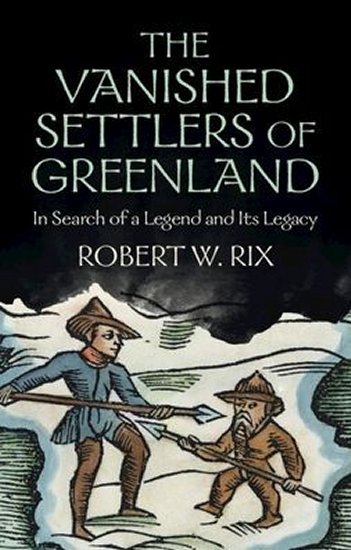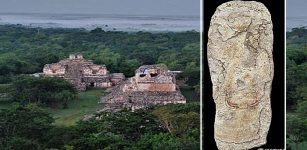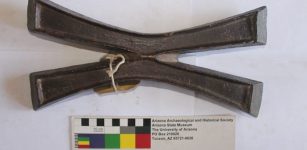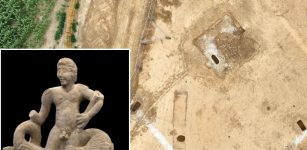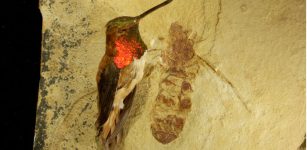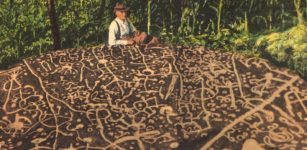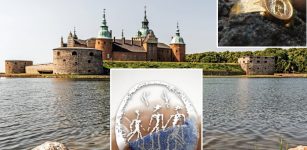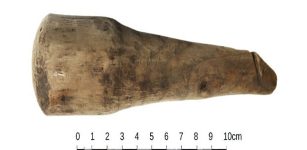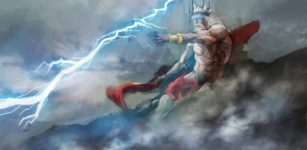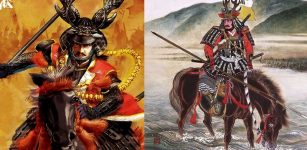Mystery Of The Vanished Settlers Of Greenland – What Happened To The Lost Viking Colonists?
Jan Bartek - AncientPages.com - In 985, Viking explorer Erik the Red led a group of Icelandic farmers to Greenland, where they established a settlement on the west coast. The Norse settlers strove through winter cold, food shortages, and, in the end, a shifting climate. The remnants these people left behind show they were determined to survive at the foot of this vast, icy, and challenging wilderness. Nevertheless, finally, seemingly suddenly, they vanished, and their mysterious disappearance in the fifteenth century has posed a riddle to scholars ever since.
Greenland, Erik's Fjord, Brattahlid. Replica of Thjodhild's Church originally built in the summer of AD 1000 and named for Erik the Red's wife. Credit: Adobe Stock - David Noyes/Danita Delimont
Archaeological evidence suggests that the settlement existed for over 400 years, but the impact of the settlement lasted much longer. It is little recognized today that the hope of finding the descendants of the settlers dominated European and American perspectives on Greenland for centuries
In his new book The Vanished Settlers of Greenland: In Search of a Legend and Its Legacy, Associate Professor Robert Rix argues that the lost Norse settlement played a decisive role in Denmark’s efforts to colonise Greenland during the 18th century.
The Danish colonization of Greenland in the 18th century was partly driven by the desire to re-establish contact with early Norse settlers that vanished from the island during the 15th century. Legends about the Norsemen – and their wealth – circulated in Western culture and led to a race towards Greenland to find them, argues Robert Rix.
“Like other New World lands, Greenland became part of European history as a place where a hunt for resources took place. Denmark's possession of Greenland and its waters was challenged especially by the Dutch and the English. Danish claims to the island relied in large parts on the memory of the settlers. Therefore, several manuscripts, books, and maps were produced not only reminding competitors of the settlers but also promoting the idea that their descendants were still cultivating Greenland fields,” says Robert Rix.
"The loss of communication with Norse Greenland in the early 15th century gave rise to speculations about the settlers’ fate, and many believed that the settlement still stood. This led to numerous attempts at contacting them, not least because rumours of the settlement’s wealth were circulating in European books. King Christian IV launched as many as three expeditions to look for the vanished settlers and their riches,W he adds.
The actual colonisation began in 1721 with the establishment of a colony by missionary Hans Egede, who wanted to convert the Inuit to Christianity and to finance the colony by reconnecting with the Norse settlement and exploiting its resources.
The fantasy of an unspoilt Norse civilisation
Just as other expeditions before his, Egede’s failed to locate the Norsemen, and during the 19th century people began to accept that the Norse settlers were no longer to be found in Greenland.
“Instead, scientists and explorers turned their attention to other parts of the Arctic as potential locations where the vanished settlers might have emigrated. Between 1870 and 1920 this inspired the publication of many adventure stories about isolated colonies of Norsemen, supposed descendants of the bold Viking explorers, who were strong, healthy, and physically impressive,” remarks Robert Rix.
According to Rix, the wide fascination with the Norse settlers in Western culture reflected public anxieties about the detrimental effects of immigration and the decline of civilisation.
“This fantasy is in line with a general critique of supposedly impure societies, which gained prevalence with the advent of eugenics. The fictional Arctic colonies had become communities frozen in time that served as an antidote to the cultural and physical decline of modernity.”
Image: A Norse settler/Viking fighting a small, indigenous Greenlander. From: Olaus Magnus’ Historia de Gentibus Septentrionalibus (1555).
For four hundred years, Norse settlers battled to make southern Greenland a new, sustainable home. They strove against gales and winter cold, food shortages and in the end a shifting climate. The remnants they left behind speak of their determination to wrest an existence at the foot of this vast, icy and challenging wilderness.
Yet finally, seemingly suddenly, they vanished; and their mysterious disappearance in the fifteenth century has posed a riddle to scholars ever since.
What happened to the lost Viking colonists? For centuries people assumed their descendants could still be living, so expeditions went to find them: to no avail. Robert Rix tells the gripping story of the missing pioneers, placing their poignant history in the context of cultural discourse and imperial politics.
Ranging across fiction, poetry, navigation, reception and tales of exploration, he expertly delves into one of the most contested questions in the annals of colonization. Read more
Well into the 20th century, it was hoped that the descendants of the settlers could be found. On a 1912 expedition to Canada’s Victoria Island, the explorer Vilhjalmur Stefansson discovered Inuit of a slender build and red-brownish hair. He measured their heads and came to the conclusion that they were descendants of the European settlers who had survived by mixing with the Indigenous population.
The existence of ‘Blond Eskimos’ became a huge media sensation. Modern DNA analysis has disproven any Norse ancestry, but at the time Stefansson’s claim rekindled the old hope that the mystery of the vanished settlers’ fate could be solved.
Updated on January 13, 2024
Written by Jan Bartek – AncientPages.com Staff


